The Palmetto Tree Service Difference
At Palmetto Tree Service, we believe that trees make the world a much more pleasant place to live. They provide us with refreshing shade, verdant beauty, cool shade, and emergency shelter. They add personality to our homes, raise our property values, and give us clean air to breathe. When your home is well-manicured, with healthy trees, everyone around benefits. That's why, as arborists, we are passionate about providing our customers with dependable Lowcountry tree care.
We believe that honest prices, state-of-the-art equipment, friendly arborists, and good old-fashioned hard work set us apart from our competition. With years of experience serving homeowners in South Carolina, you can rest easy knowing every member of our team is committed to:
- Conducting themselves in a professional manner
- Providing you with top-notch tree care services
- Arriving at your property on time and ready to work hard
- Providing you with reasonable tree care service rates
- Exceeding expectations
- Utilizing safe, time-tested techniques when trimming, pruning, or removing your trees and shrubs
- Friendly, helpful customer service
Our customers mean the world to us. When you hire our company for tree services in cityname, we take that responsibility seriously. No matter the size of your project, our team will always treat your home like it is our own. Plus, you won't ever have to worry about sneaky hidden fees or outrageous pricing. We believe every homeowner deserves access to affordable tree services!
Whether your home has overgrown trees that need trimming or you have unsightly stumps that require grinding, we're here to handle it all. Curious what kind of tree care we provide to homeowners in The Palmetto State?
Call Us
 843-345-0579
843-345-0579
Our Services
Services Area
Eco-Responsible Tree Removal in Johns Island, SC
We have removed thousands of trees over the years. However, we never recommend tree removal if it's not warranted. Some South Carolina tree service companies tend to remove trees when they should be saved or simply pruned. Others go the opposite direction and never recommend tree removal.
Unlike other companies, our arborists make educated recommendations based on experience, your trees, and your needs. We make the right call for you - not for us. If disease, destruction of foundation, or other circumstances necessitate tree removal, rest assured we're recommending it for a reason.
Benefits of Tree Removal
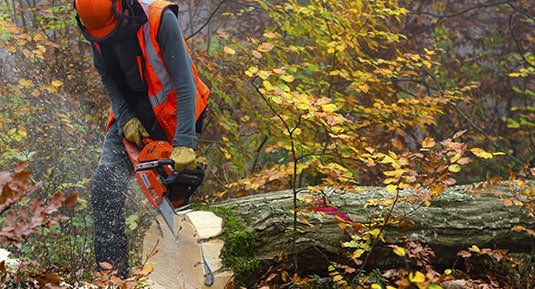

Though we never recommend this service unless it's needed, tree removal is often the only way to protect your property and family. When done properly, removing trees from your yard can have numerous benefits.

Prevent Damage to Your Foundation
When the roots of a tree spread and grow, they often damage concrete structures, like your home's foundation or driveway. This unsightly, unsafe situation is preventable with careful tree removal.

More Yard Space
If you've got to remove trees, you might as well make use of the space. Removing trees from your yard frees up space for fun, useful additions to your home firepits and pools. Some examples that we've seen from clients include removing more free space to plant vegetables and flowers and even room to build a new basketball court.

Enhanced Views
Another benefit of tree removal is that you can create a better view for your home, both inside and out. If you have unhealthy trees blocking the view of your property, removing the tree could be a solution. On the other side of the coin, you might want the exterior view of your home to remain intact and unobstructed by trees.
Tree Trimming in Johns Island, SC
Have you noticed your favorite tree growing strangely? Are your trees so overgrown that it's making your home look like vagrants live there? Are the trees around your property weighed down by dead, dangerous branches? If you answered yes to any of those scenarios, Palmetto Tree Service has a solution to your problem.
Most folks don't know that trees respond to their environment. When trees aren't cared for, they can cause unwanted problems for the homeowner. Issues like overgrowth aren't just ugly - it's a potential safety hazard for your home and family. To prevent these problems from plaguing your property, it's important to keep your trees pruned and trimmed.
Our pruning and trimming have been described as "artistry" by our customers and are performed by highly skilled tree climbers per the Society of Arboriculture standards. Trimming procedures such as view enhancement and crown raising boosts curb appeal and open up obscured views. Proper pruning can also help establish your tree's structural integrity, which helps keep them planted firmly even in South Carolina wind gusts.
Because every shrub and tree is different, we approach our tree trimming projects with a detailed plan of action. That plan starts with our team of professional tree trimmers visiting your home. Once we see what kind of trees we'll be pruning or trimming, we'll put together an actionable plan which we'll share with you. As tree care specialists, we always account for unique variables like your tree's species and where they're located in your yard.
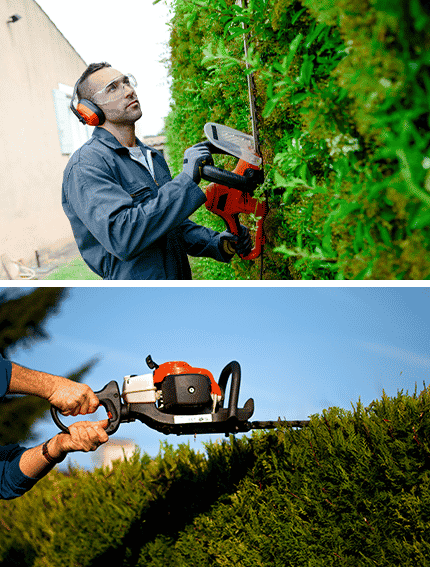
Benefits of Tree Trimming
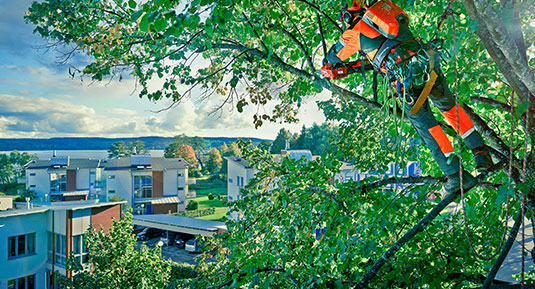
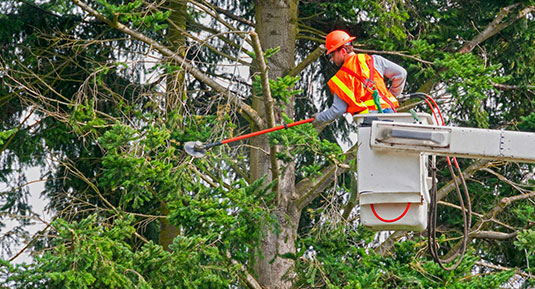
For some folks, tree trimming seems like a minor detail in the grand scheme of homeownership. It can be tedious, but keeping your trees trimmed and well-maintained is more important than you might think. Below are just a few of the many benefits of keeping your trees and shrubs trimmed:

Tree Health
Part of the Palmetto Tree Service pruning and trimming process includes the removal of damaged, broken, dead, and diseased branches. When ignored, these dead and dying branches grow harmful fungi that can decimate the trees around your home or business. Removing these branches can help keep your trees healthy. Tree trimming also allows the sun and air to reach your trees, further helping to maintain their health.

Safety
As proud residents of South Carolina, we know how scary lightning storms and hurricanes are. Strong winds from these natural disasters result in fallen branches and uprooted trees. South Carolina's storm season is a serious concern for homeowners, especially those with tree-lined driveways, rec areas, and walking paths. When you trust Palmetto Tree Service, you're actually storm-proofing your home. If you have low-hanging limbs near home, pruning provides more safety and overhead clearance. That way, you don't have a panic attack every time the skies open up.

Aesthetics
Nobody likes the looks of a dying, disheveled tree. Tree trimming improves the general appearance of your tree and makes your whole yard and home look better. Tree trimming also helps prevent branches from intertwining with one another.

Developmental Tree Trimming
Pruning younger trees is crucial for their health as they age. This vital tree service in Johns Island keeps young trees appealing and helps promote optimal branch structure.
Types of Tree Trimming
Not all tree trimming services from Palmetto Tree are the same. Our experts specialize in many trimming services, so you get the right kind of trim for your needs. Our team understands that even the slightest mistake can permanently affect your yard and trees. That's why we approach every project with precision and expertise.
Crown Reduction: When your trees age without proper care, they can develop too many branches on their interior. Trees like this give great shade, but too much is not a good sign. That's where crown reduction trimming comes in. By reducing the density of your tree's crown, our tree care experts improve its growth rate and health. Crown density reduction also promotes a longer lifespan and a more beautiful appearance.

Storm Prep and Cleanup: Trimming and pruning procedures like removing dead wood and thinning crowns should be done before a major storm hits. Reducing branches and leaves lessens the force that wind gusts have and helps minimize the chances of trees falling. If a storm does damage your land, Palmetto Tree Service has the team and tools to help. Having recently worked Hurricanes Charlie, Ivan, Wilma, Katrina, Ike, Irene, Florence, Dorian, and even Sandy, Palmetto Tree Service has vast experience with twisted and fallen trees. We protect your property from further damage and safely remove lumber from damaged structures.
Other tree trimming services that Palmetto Tree Service offers include:
- Hazardous Tree Assessments
- Shrub Trimming
- Pruning
- Cabling
- Bracing
- Corrective Trimming
Contact Us
Free EstimateStump Grinding in Johns Island, SC
For most property owners, removing a tree can seem like a major project. While that notion certainly isn't wrong, tree removal is more straightforward and often easier than trying to remove an unsightly stump from your yard. Have you ever wondered why you see so many yards with stumps dotted around the land? It's because they're tough to remove. That is why Palmetto Tree Service offers stump removal services in South Carolina.
Our skilled stump grinders bring a depth of knowledge and modern tools to every project we approach. Available for any tree removal project, our fast, efficient grinding machines ensure stumps are 6-8 inches below grade. That way, you can plant your favorite bushes and shrubs where your stump used to be.
Our stump grinding and removal efforts don't just make your yard look great. They also save you time, money, and can prevent injuries. There's a time and place for DIY yard work, but stump removal isn't one of them. Going the "DIY" route can take weeks, even if you work an hour or two every day. There's also the issue of operating heavy machinery on your own, which is dangerous and costly. For these reasons alone, it's best to trust professional stump grinders to remove your tree stumps safely.

Benefits of Stump Removal in Johns Island, SC
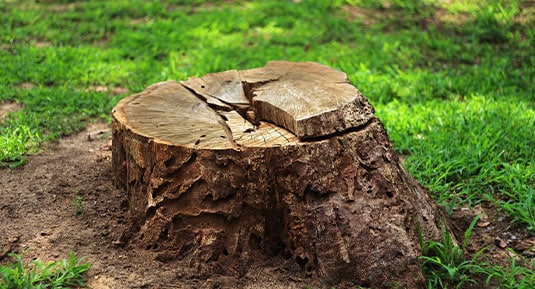


Pest Prevention
Tree stumps are notorious for harboring harmful pests that can ruin your property. We're talking ants, termites, carpenter bees, and other wood borers. If you've noticed an uptick in pests around your home, call Palmetto Tree Service for a quote on our stump removal. You could be killing two birds with one stone.

Eliminate Unwanted Growth
When you leave a tree stump in your yard, there's a good chance you could experience unwanted tree growth. These new growths cause clusters of small trees to grow at the base of your stump. This isn't only unsightly - it can kill nearby plants because the more recent growths hoard water and nutrients to themselves.

Better Looking Yard
If you're a homeowner who loves beautiful landscaping, well-sculpted hedges, and a neat law, you will love our stump removal services. Not just for the weight off your chest but for your home's enhanced curb appeal and resale value. This point is extra pertinent if you're going to sell your home soon.

More Space
If your yard is small, even one stump can affect your usable space. If you spend a lot of time playing sports or just enjoying your yard space, stump removal is a huge help. After all, nobody wants to toss a football if there are old stumps you've got to avoid. With their complicated root systems, stumps also take up considerable space below ground. Stump removal gives your family the space needed to grow vegies, plant flowers, erect water features, and more.

Reduce Headaches
Is stump removal impossible for non-professionals? Sure, in theory. You could take spend hours researching the best ways to remove stumps. You could go to your hardware store, rent a powerful stump grinder, and risk your safety trying to run it without training. You could spend every minute of your free time grinding the stump down. Or, you could work with a trustworthy stump removal company with trained professionals, as you'll find at Palmetto Tree Service.
Your Premier Tree Service Company in South Carolina
With years of experience, it's no wonder why so many South Carolina natives choose Palmetto Tree Service over the competition. Clients love us because we exceed expectations with a smile - no if's, and's, or but's.
Our commitment to superior service isn't a gimmick; it's a year-round promise. When you choose Palmetto Tree, you'll benefit from:
- Professional advice and expertise
- Seasoned, friendly, hardworking tree care experts
- Efficient, effective tree care services
- Competitive pricing
Ready to get started? We're ready to help! Give us a call to learn more about our tree care services and to schedule your first appointment today.
 843-345-0579
843-345-0579
Free Consultation
Disclaimer:



